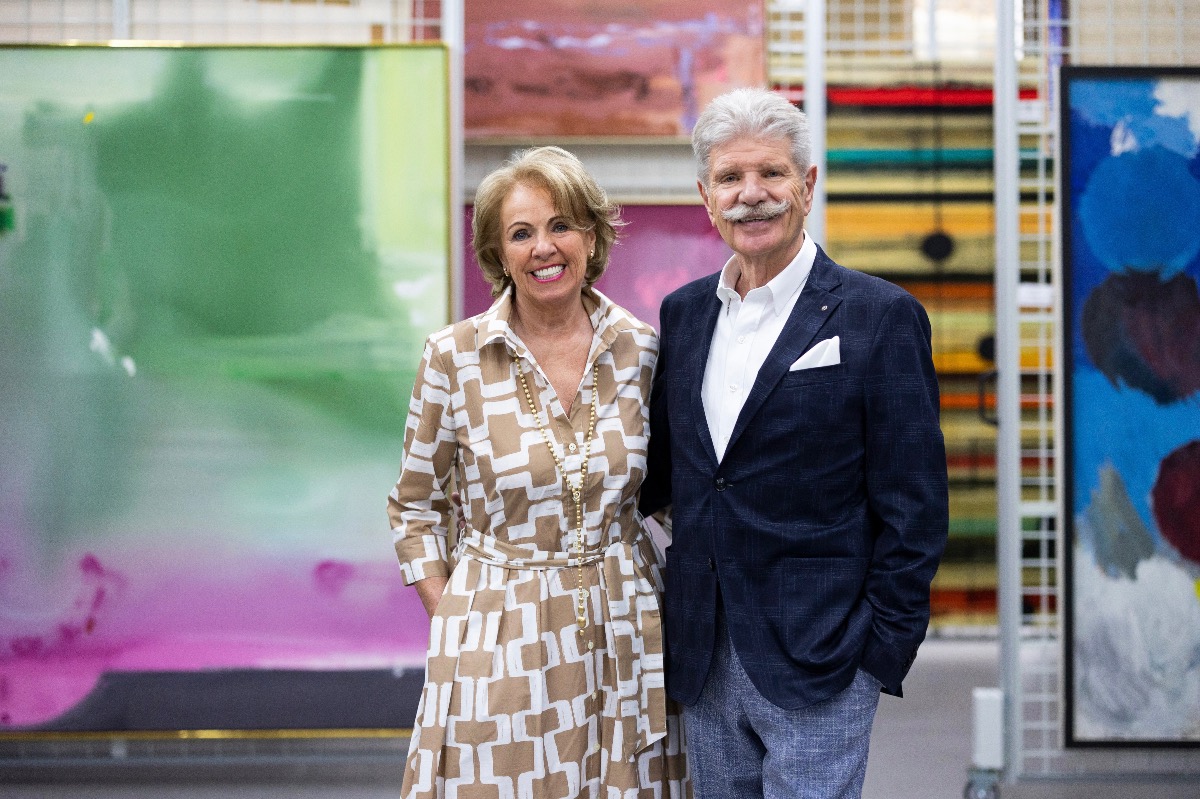
A Passion for Abstraction
Irene Gludowacz
Reinhard Ernst on Collecting the First Global Phenomenon in Art
The founder and art collector Reinhard Ernst hails from Westerwald, lived in Eppstein, and has resided in Wiesbaden for over twenty years. As an entrepreneur, he built two companies for precision gears in Limburg, leading them to world market leadership. The proceeds from the sale of these companies were used to establish the Reinhard and Sonja Ernst Foundation in 2004. The charitable foundation exclusively supports its own projects related to art, culture, and the preservation of historical monuments. Additionally, it promotes community initiatives, particularly benefiting young people and senior citizens.
Over the course of 40 years, Reinhard Ernst's art collection has grown to nearly 1,000 works, focusing on international abstract painting and sculpture after 1945.
Construction of the Reinhard Ernst Museum (MRE) in Wiesbaden city center began in 2019 and was completed with its opening in June 2024 with the exhibition "Colour is Everything." The exhibition showcases a selection of around 60 works from the collection. Reinhard Ernst enlisted his long-time friend, the Japanese Pritzker Prize-winning architect Fumihiko Maki, who sadly passed away just a few days before the opening. The sole sponsor of the museum is the Reinhard and Sonja Ernst Foundation.
Museum Reinhard Ernst. © Reinhard & Sonja Ernst Foundation. Photo: Helbig Marburger.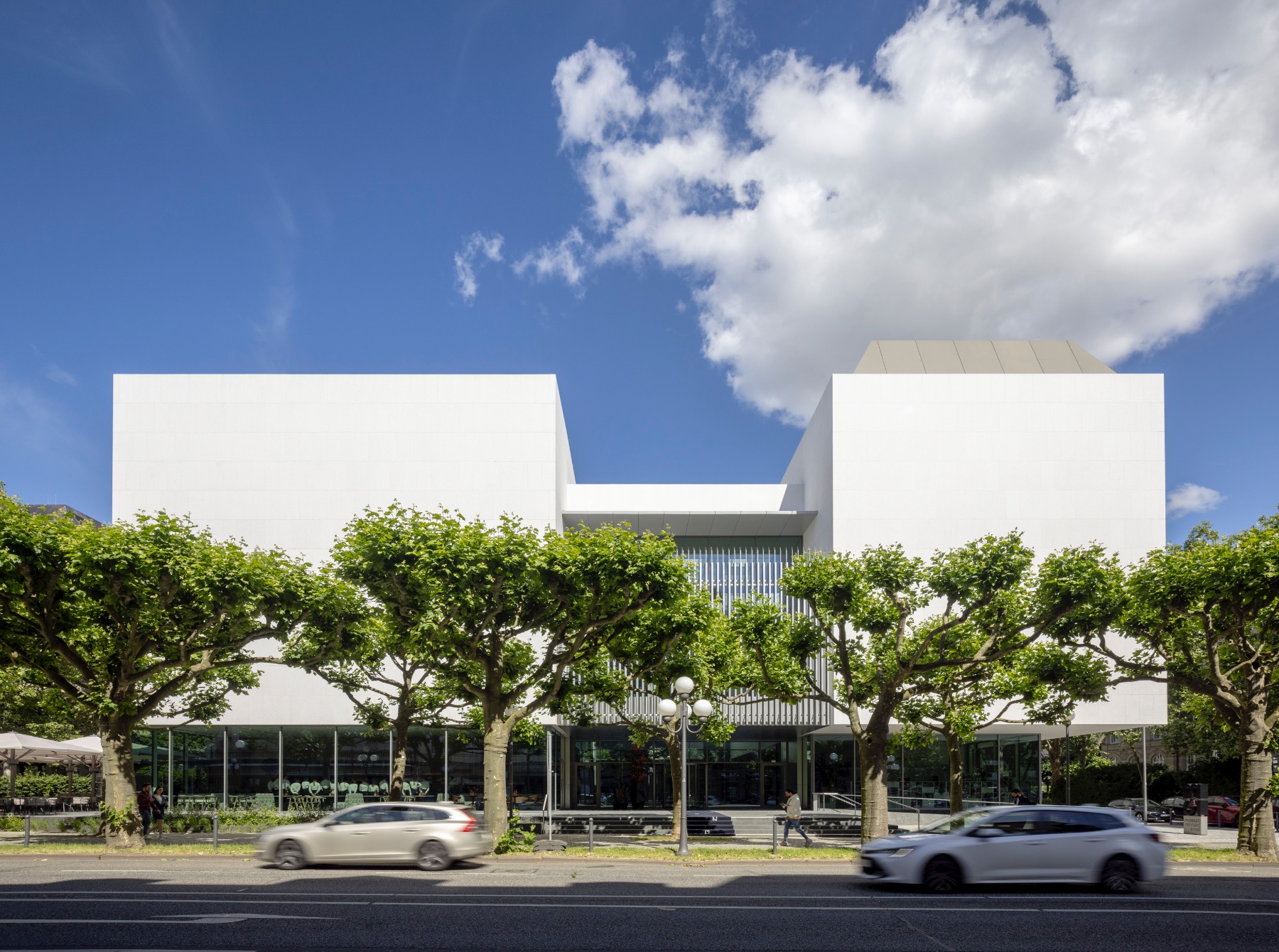
Courtyard with sculpture - Buscando la Luz
III by Eduardo Chillida (landscape format).
© Reinhard & Sonja Ernst Foundation, Museum Reinhard Ernst. Photo: Helbig Marburger, 2023.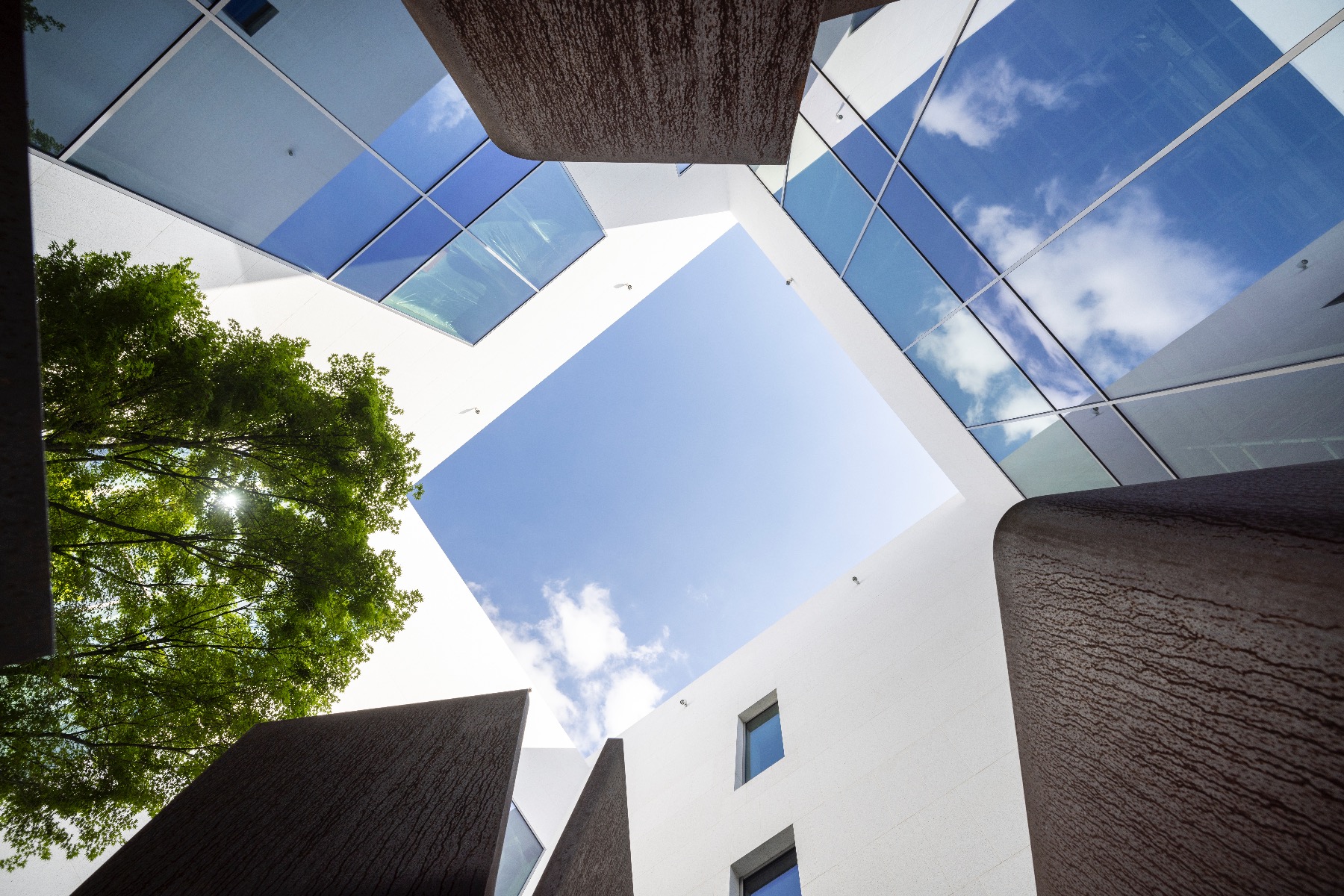
How did your enthusiasm for abstract painting come about?
I came to art purely by chance. During my parents' time, in the Nazi era, abstract art was frowned upon, sometimes banned, and received little attention even into the 1960s, especially in Germany. On one of my business trips to Paris, I visited a museum on a rainy Saturday afternoon and began to take an interest in this world.
Do you remember your first purchase?
I bought my first works as decoration for our house. It was a work on paper by the painter and graphic artist Hubert Berke and another by Karl Otto Götz, a representative of German Art Informel. Later, I got to know Karl Otto Götz personally, who shared much with me about the art world after 1945. Both painters remain among my favorite artists.
How did your passion for collecting develop?
You become a collector when you realize you have more works of art than free walls. Over the years, a compulsion often develops that drives you - you become addicted to art.
Eventually, the question arises: What do you want to do with your art collection? When the works can no longer be "stored" at home, at work, or even with friends, you need a place to store them. I had my company in Limburg, where I built a depot with ideal temperature and humidity conditions.
Why abstract art in particular?
Where else do I have the freedom to see what I want? Abstraction is the only art form that doesn't set any guidelines: You look at it and feel what you want. Frank Stella, who sadly also passed away at the beginning of May, once said, "What you see is what you see." I visited his studio with an artist friend, but Stella was already very ill at the time, and unfortunately, we didn’t meet him.
Exhibition "Farbe ist alles!" / "Colour is everything!" Photo: Helbig Marburger. Artwork: Georges Mathieu (1921–2012). La Mort du Connétable de Bourbon, 1959.
Oil on canvas. 96.5 x 194 cm.
P. 65.; Toshimitsu Imaï (1928–2002). Formation Stream, 1971 (detail). Mixed media on wood
18-part, 200 x 2.083.5 cm.
P. 64/65.; Katharina Grosse (*1961). Untitled (KG/M 2010-1004M), 2010. Acrylic paint on canvas. 200.8 x 134.7 cm.
P. 67.; Hubert Berke (1908–1979). Grüne Beschwörung, 1958. Oil on canvas. 130 x 100 cm.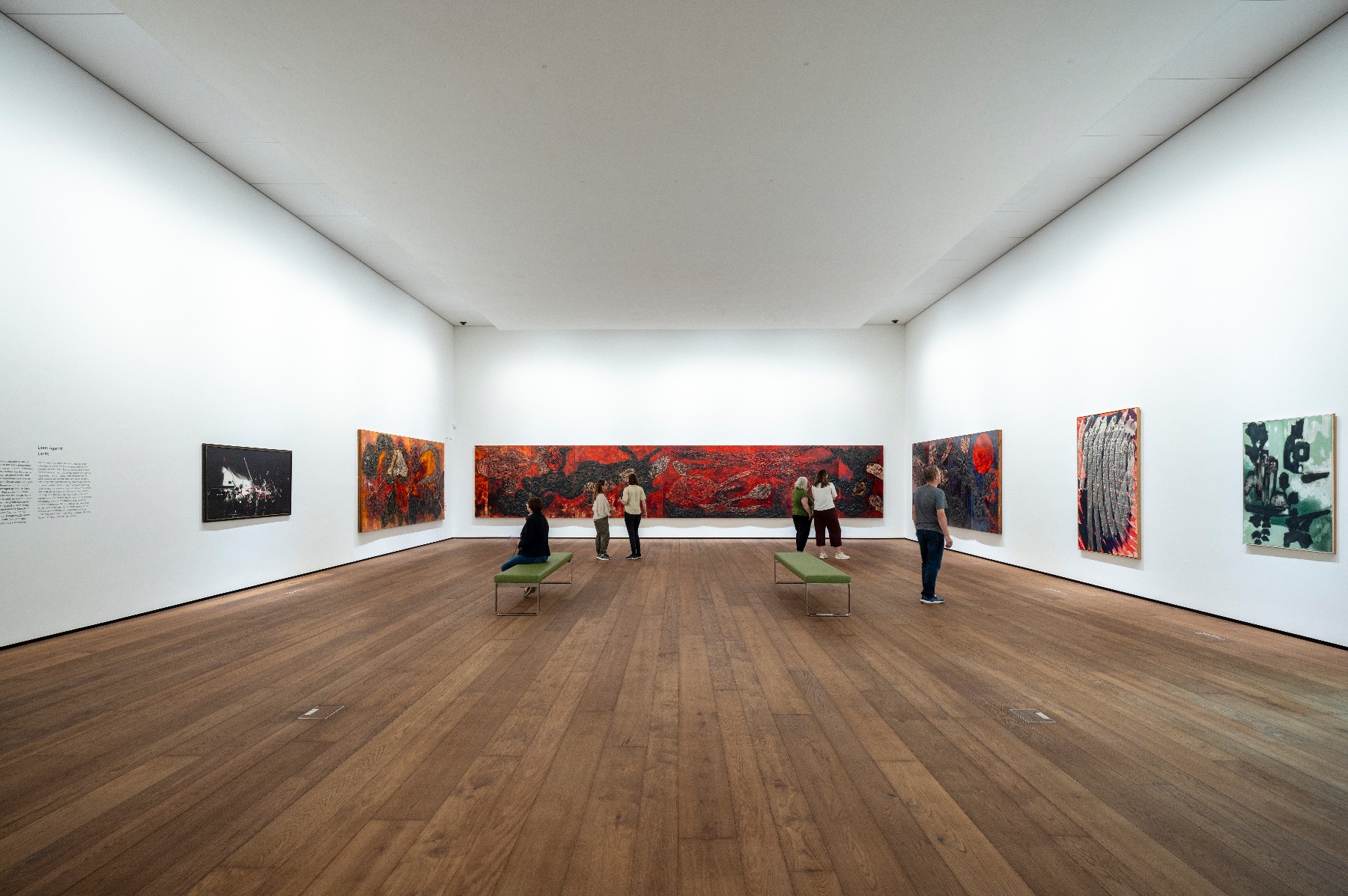
Artwork: Lee Krasner (1908–1984). Peacock, 1973. Oil on canvas. 209 x 209 cm. P. 92.; Thomas Scheibitz (*1968).
101–2002, 2002. Mixed media on canvas. 170 x 240 cm. P. 97.; Helen Frankenthaler (1928–2011). Zarathustra, 1988. Acrylic paint on canvas. 205.7 x 249.6 cm. P. 87, p. 76 (detail).; Ernst Wilhelm Nay (1902–1968). Chromatische Scheiben, 1960. Oil on canvas. 189 x 341 cm. P. 94/95.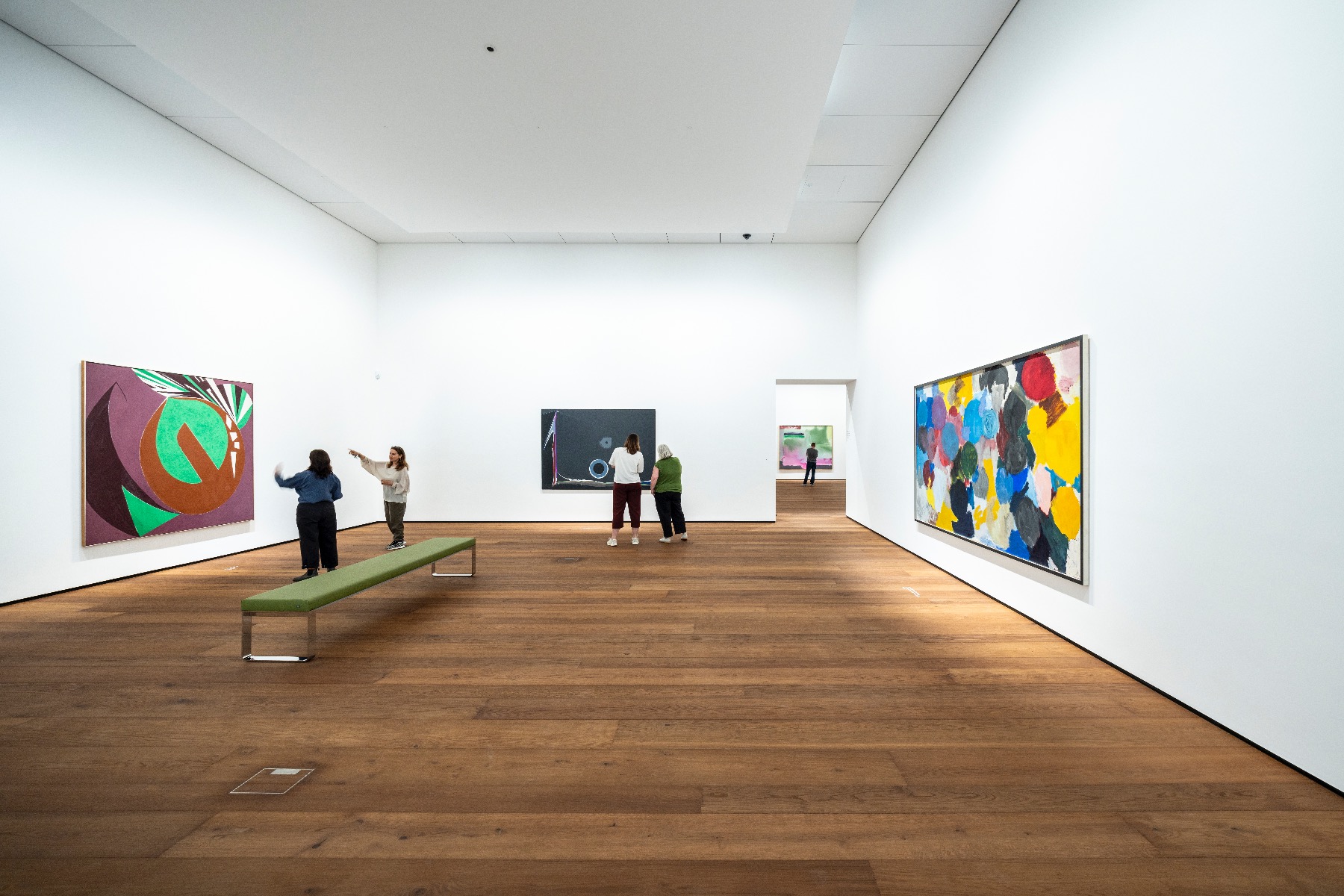
Artwork: Frank Stella (*1936). The Chase–Second Day (Moby Dick Series), 1989.
Mixed media on metal. 290 x 555 x 135 cm. P. 102/103.; Frank Stella (*1936). Stubb kills a Whale (Moby Dick Series), 1988.
Acryl and enamel paint on aluminium. 287 x 261.6 x 111.7 cm. P. 104.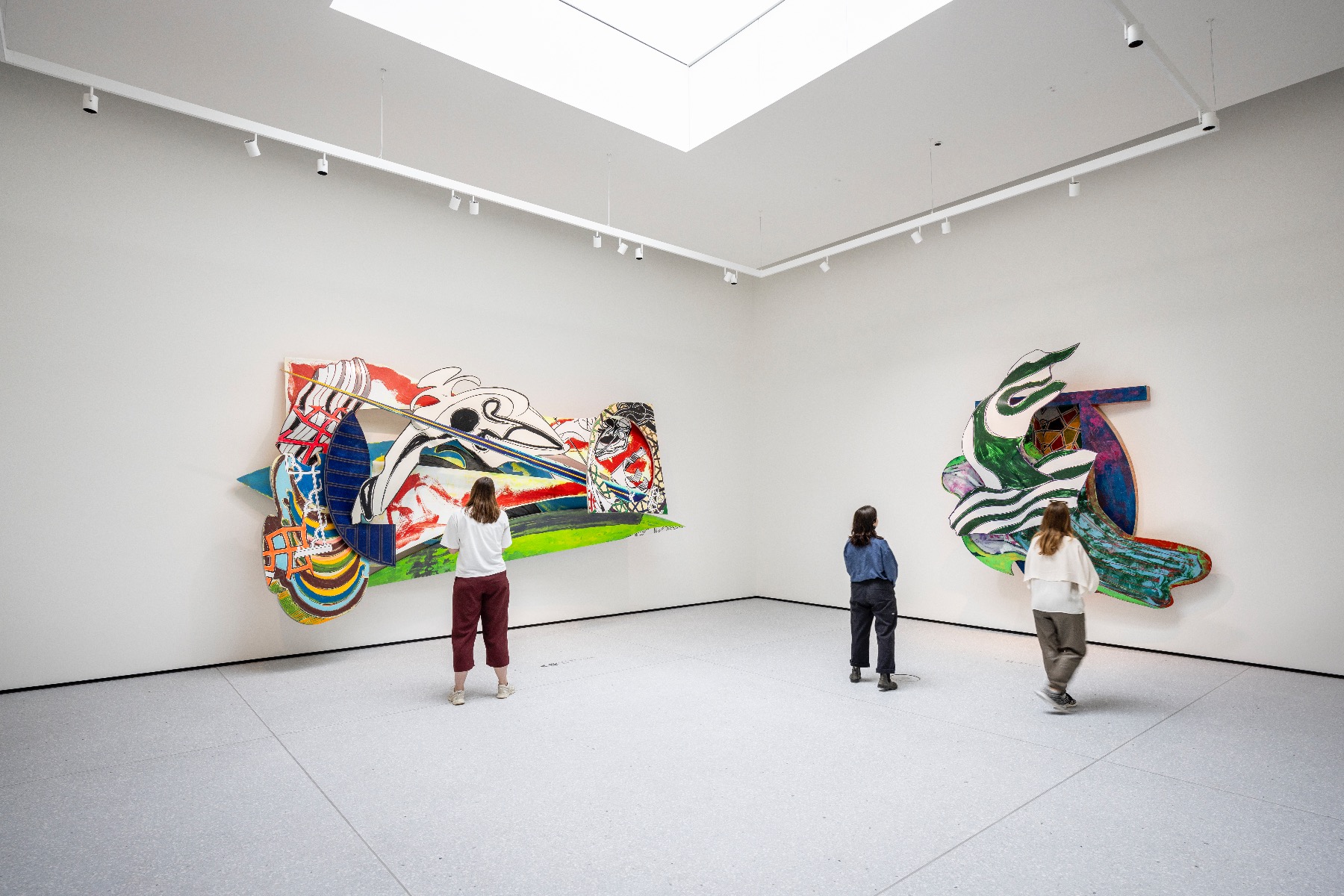
Did you get to know other artists personally?
Yes, for example, the American painter Joseph Marioni, the Japanese artist Tōkō Shinoda, and the sculptor Yoshikuni Iida. In the last few years, I've made contact with several contemporary artists. Katharina Grosse was here because she created a permanent glass installation for the MRE. Bettina Pousttchi also contributed with an in situ installation in the museum's entrance area. Sir Tony Cragg is represented with a sculpture at the MRE, as is the street artist Claudia Walde, alias MadC, with a large work on glass, and the Wiesbaden-based artist Karl-Martin Hartmann with an installation.
Katharina Grosse. A glass of water, please. © VG Bild-Kunst, 2024. Museum Reinhard Ernst
Photo: © Martin Url 2024.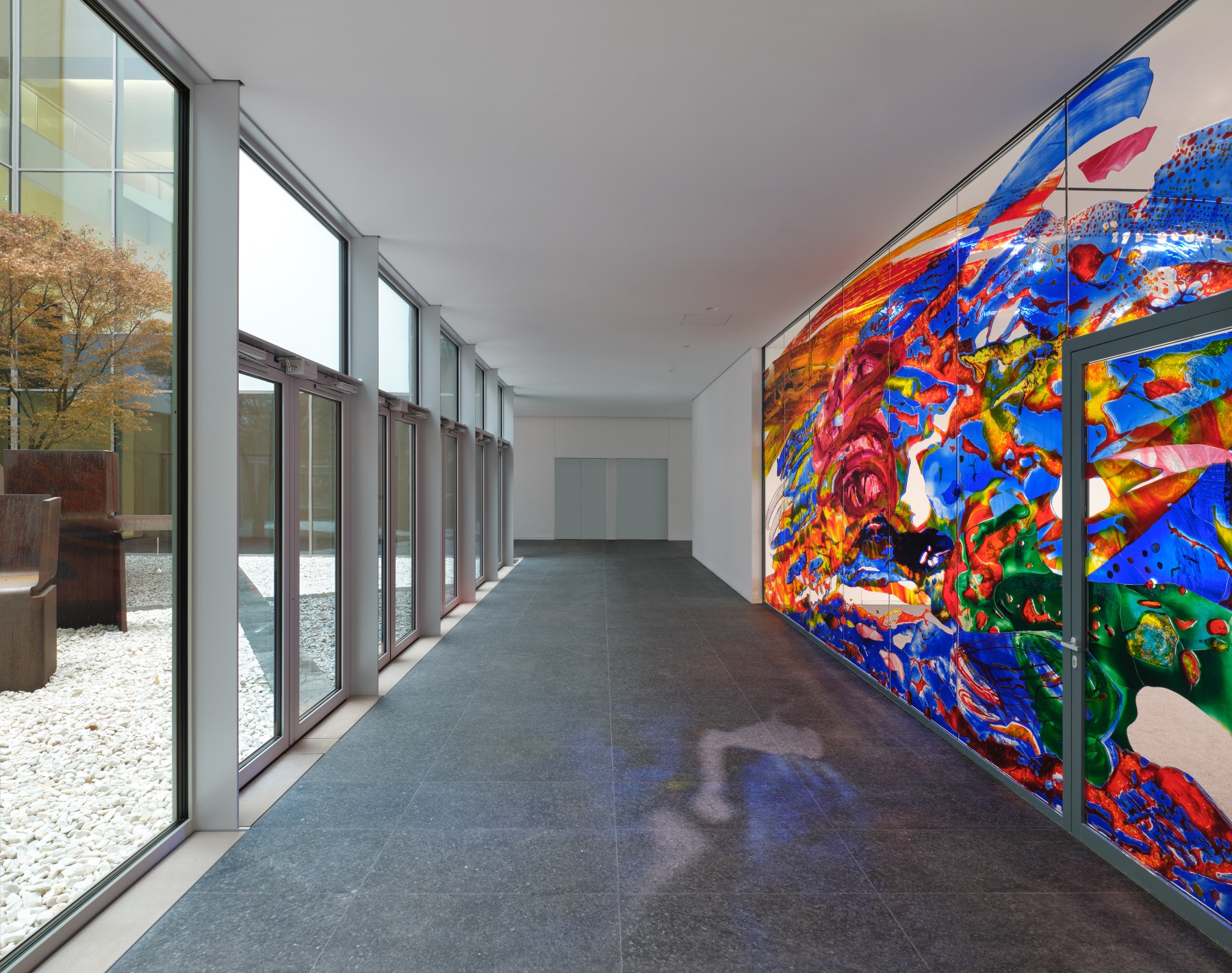
Your focus on abstract art lies in European, Japanese, and U.S. American art. How did these regional focal points come about, and how did you develop them further?
European artists from Germany, France, and Italy are mainly represented in the collection, as I often traveled to these countries on business. However, I never consciously considered the origin of the artist. I simply looked at the work, and if I liked it and had the financial means, I bought it. In the mid-1980s, I started visiting museums, primarily in the cities where I was working when time allowed. I got to know Hans Maulberger in Munich and bought many pictures from him back then, at one point, 13 works in one go. Even he had never experienced that before. After I bought a beautiful large Fred Thieler, which he offered at a favorable price, he said to me, "Mr. Ernst, you've made a good deal." I replied, "Mr. Maulberger, we've both made a good deal." Today I can say he was absolutely right! Some paintings of this type and from this period are simply no longer available today. The pictures immediately appealed to me, so I bought them. Maulberger represented exactly the artists I liked.
I traveled to Japan and the USA frequently on business, several times a year over a period of 30 years. There, I also visited the big museums. In Tokyo and New York, I maintained contact with three gallery owners, to whom I regularly sent lists of artists that interested me. That was a time when these works were still relatively "cheap" compared to today. This is also how I got to know our architect Fumihiko Maki, with whom I developed a very long connection. In Japan, I also got to know and appreciate the work of the "Gutai Group" and integrated them into my collection. At that time, few collectors were interested in this group of artists.
At first, I bought the works for my private home, and later for my company as well, where I hung works in the corridors.
How did your employees react to the artworks?
I occasionally overheard conversations about the pictures. There were comments like, "...you can't see anything, but the colors look quite good...". I thought, at least they've thought about "color." At some point, I got into the habit of saying a few words about the artworks at company meetings and pointing out their connections. This sparked interest and even enthusiasm among some of the staff. It cannot be assumed that everyone likes abstract art, but if some of the employees start to take an interest in it, it's a good start.
Do you decide on purchases together as a couple?
No, that is completely unproblematic for us: I am the collector, and I decide on purchases. My wife mainly plays a role when it comes to choosing pictures for our living rooms. In the past, when I simply hung a picture without asking her and realized that she didn’t like it, I left the decision up to her. When we relocated the paintings by Helen Frankenthaler and Adolph Gottlieb to show them in the museum, she had a funny feeling. After all, we had lived with the works for over 10 years.
Now we say: Art should be seen by the public. We can go to the museum every day and look at the artworks. At home, we now hang works by young artists such as Marlon Red and Henriette Grahnert.
For me, the approach to art is emotional. When you look at a lot, you sort things out directly and automatically: you reject some things because you already know them, while other works you examine more closely because they could be interesting for the collection. It takes years to develop this expertise. It’s a process, and you have to immerse yourself in it.
How do you select the works and where do you find them? Do you visit art fairs?
I am not a "fairgoer." Of course, I have visited Art Basel, Art Cologne, or Art Karlsruhe occasionally, but I buy less from galleries. Perhaps 20 percent of my collection has been acquired through galleries, and 10 percent directly from artists' studios - a number that is increasing today. However, I acquire most of my works worldwide at auctions, primarily in the USA, mainly New York, but also occasionally in Hong Kong and Tokyo. Here in Europe, metropolises such as London, Paris, Amsterdam, and Milan are the main hubs for international auctions organized by Christie’s, Sotheby’s, and Phillips. I also buy a lot from German auction houses. In total, there are about 20 auction houses where I find what I am looking for. For years, many auction houses have offered private sales, as sellers often do not want an official sale at auction. The asking prices are therefore often high. You make an offer - sometimes it works, sometimes it doesn’t.
You probably have the world's largest collection of works by Helen Frankenthaler. How did you come to collect this artist so extensively?
Quite simply: she became my favorite artist! She was doing something special at the time.
If you look at her color field paintings, you can feel them. It’s a "wow" moment when you see a canvas, for example, 4.00 x 2.50 meters, sometimes even larger, and observe how the colors harmonize, which colors she chooses, and how they blend together! At first, I had difficulty distinguishing the top from the bottom in her paintings. You can usually tell by the signature. She didn’t sign everything, but usually marked the "bottom" with regular lines. How she later managed to paint the canvases without a ground - that’s her "invention," I say - Morris Louis also benefited from this. I only learned that later! When I saw one of her paintings for the first time, I thought: that looks strange - until I realized it was the reverse side!
In my collection, the focus is on her pictures from the 1950s to about 1995.
During this long period, you can also recognize in her work when she wasn’t doing so well. That’s what fascinates me. After 2000, she only painted small-format pictures.
Helen Frankenthaler (1928–2011). Zarathustra, 1988.
Acrylic paint on canvas. 205,7 x 249,6 cm. Abb. S. 87.
Helen Frankenthaler (1928–2011). Pyramid, 1988.
Acrylic paint on canvas. 169 x 166,5 cm.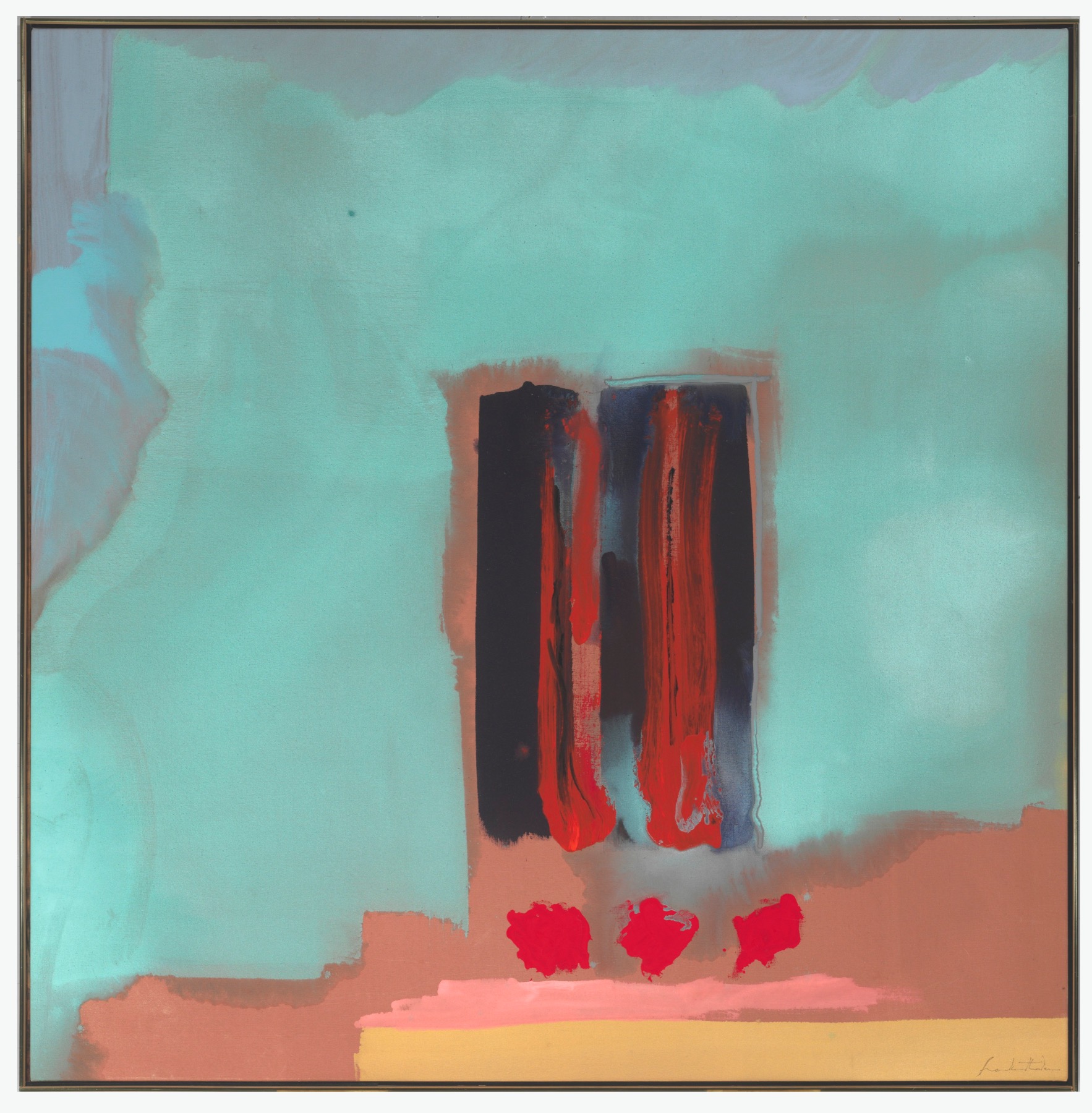
It might be a coincidence, but I read in a book that she felt very, very lonely at that time. In the painting "Paris at Night," you might think you can see that: It is initially very gloomy, but on closer inspection, it’s an incredible picture with a lot of feeling! The painters' emotions often play a major role in their work.
Another focus of your collection is French abstract art, or art created in France after 1945...
I traveled to Paris mainly for business reasons in the 1980s and 1990s. I had founded a company there, so I was in Paris at least once a month for many years. Through a friend, I was introduced to Avenue Matignon, then a street full of wonderful little galleries where I occasionally bought something. Many artists fled to France during or shortly after the Second World War, for example, Judit Reigl from Hungary. In Paris, I purchased works by Jean Marc Riopelle early on. Although he was Canadian, he was represented there, and few were interested in him at the time. Georges Mathieu, who was already a well-known painter, traveled to Japan and visited the Gutai Group. I also acquired works by him for the collection. Of course, the works of artists like Pierre Soulages, Hans Hartung, Chaissac, Simon Hantai, and Raymond Hains are well represented in the collection.
How did the idea for the museum come about?
In the early 2000s, I asked a few museums whether they could imagine displaying "hosting" our collection, provided they could store it and exhibit around 15 works from the collection each year - which isn’t really that much. However, the museums were mainly interested in using my depot. Another option would have been to sell the collection. However, I realized that entire groups of artists from Germany and other countries are represented in the collection - and exclusively with abstract works. So, I started to think about building a museum myself. A lengthy process, as we know, because a museum devours enormous resources. At the time, it was not possible for me to realize the idea.
Later, when I sold my companies, I was able to really get to grips with it. The planning started eight years ago. We established a foundation, and like many other founders, set it up for "eternity" and funded it. We have done without any subsidies. The museum is a public building, functioning like any other, but it is privately donated.
The site where the Museum Reinhard Ernst stands today was also considered as a location for the Wiesbaden City Museum. However, that project never materialized.
What experiences did you have during the construction of the museum?
Initially, it was a huge amount of work and associated with many challenges!
The planning gave me a lot of pleasure, but the construction itself also required special efforts. Only those who have built a museum themselves understand the complexity. Today, I hear that many people appreciate what a special building it is.
Founding my company and providing employment for many people was my life’s work. However, the museum became a highlight of my life.
Foyer, view of the atrium. On the right - the glass work by Katharina Grosse - A glass of water, please. ©
Reinhard & Sonja Ernst Foundation, Museum
Reinhard Ernst. Photo: Helbig Marburger, 2024.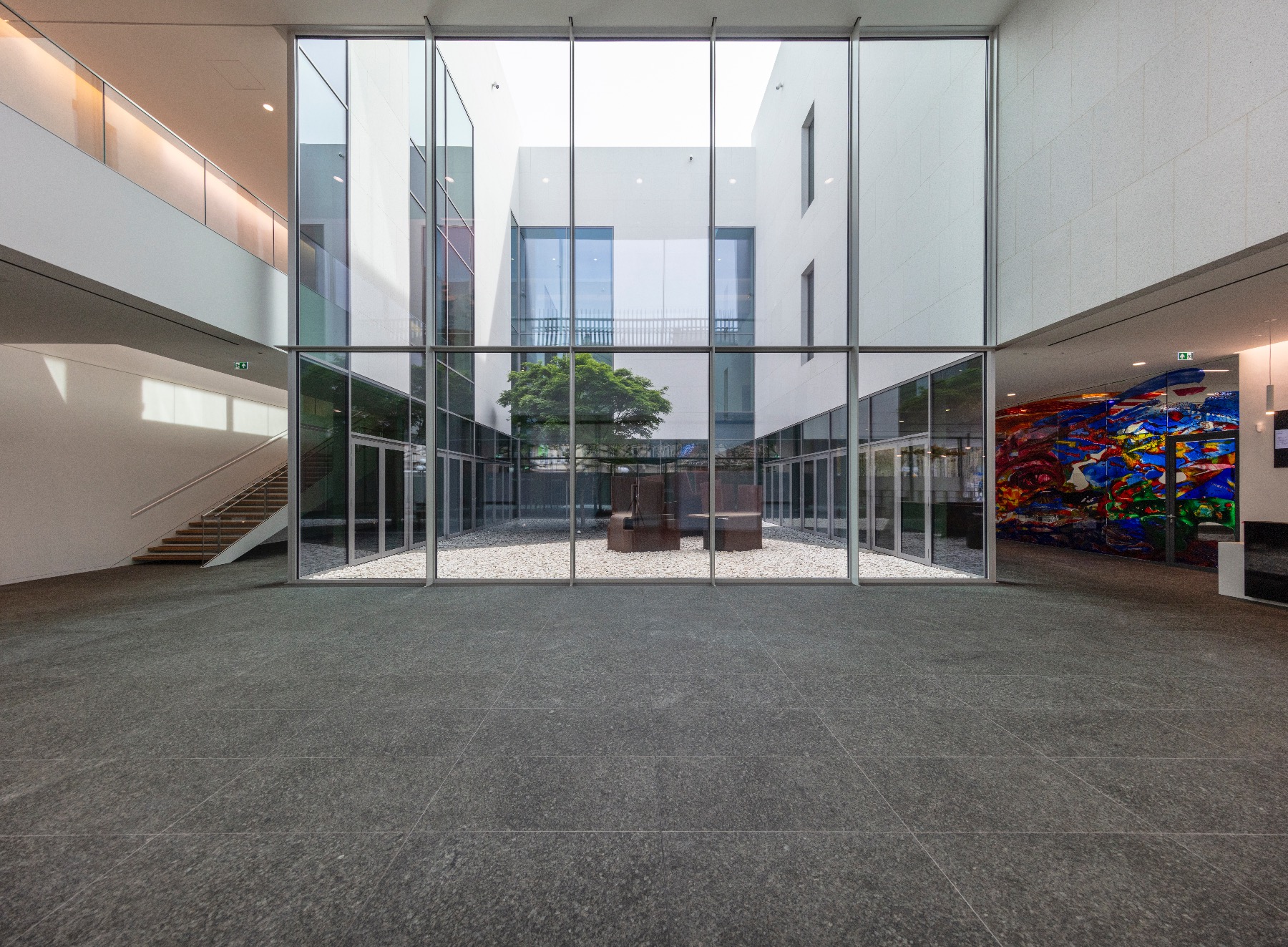
Museum Reinhard Ernst. © Reinhard & Sonja Ernst Foundation. Photo: Helbig Marburger.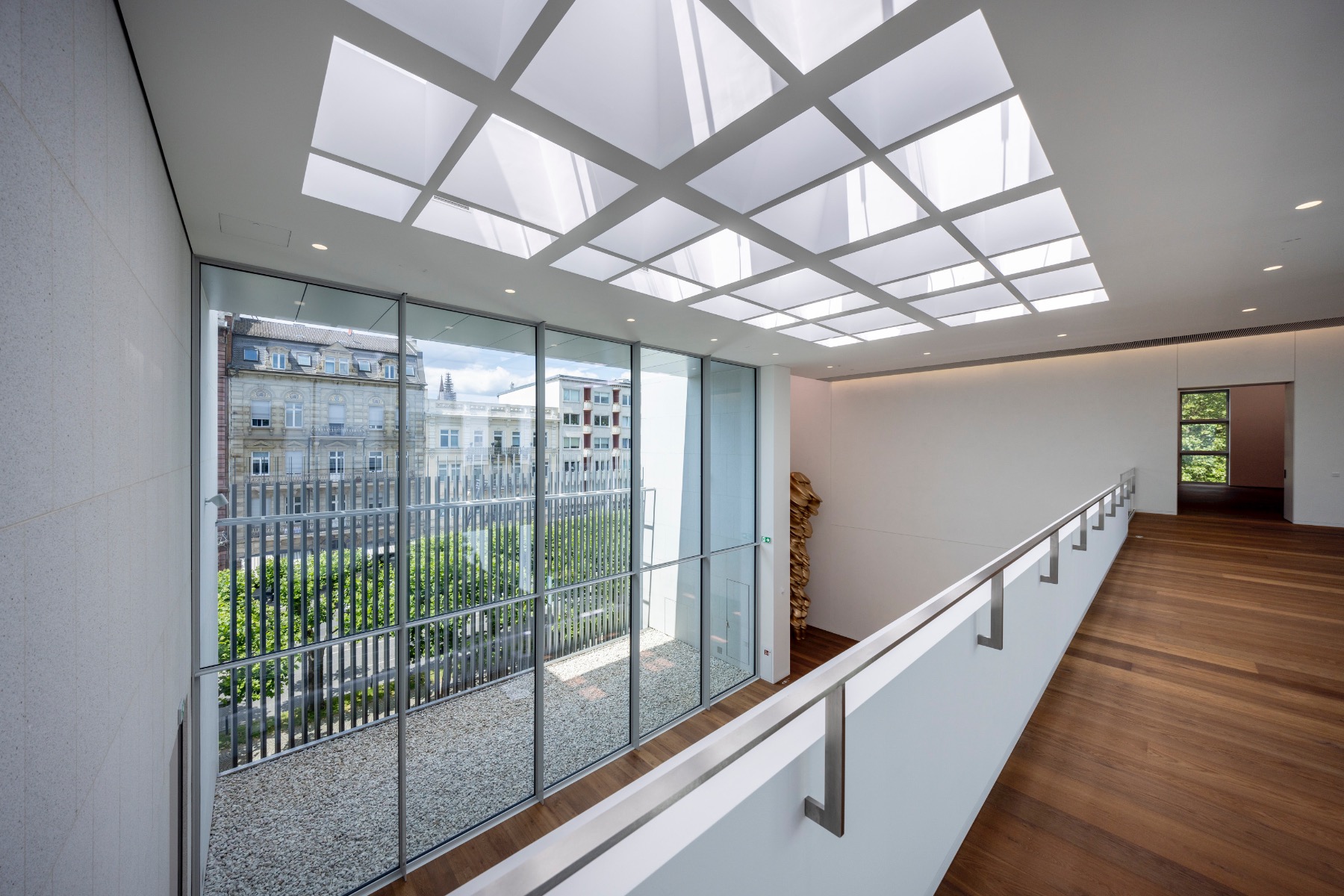
What advice would you give to young people today about building an art collection?
I would definitely advise them to decide early on which direction they want to take. It is important to define a collection area or art direction. I didn’t do that at the beginning; I simply collected - but always with a focus on abstract art. Later, I then included international groups from Japan, the USA, and France. I clearly set a theme for myself. The core can then grow, even into many smaller areas. Today, there are an enormous number of artists worldwide who create great works!
The important thing is the budget - and the question: What can I afford? Do I have the means for the works I like?
Collecting art just to make money - well, you’d have to be a different kind of person to do that. It wouldn’t be for me. But I imagine it could be a nice activity.
Title image: Reinhard and Sonja Ernst. Photo: © Tanja Nitzke 2023.